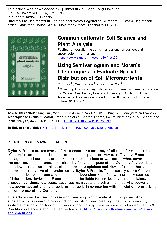摘要
Spatial distributions of micronutrients in soils of Shouguang were evaluated using semivariogram and Moran's index (Morans I) techniques to compare difference and veracity of these two spatial analysis methods. A total of 601 topsoil (020 cm) and 155 deep subsoil (150200 cm) samples were collected on a symmetrical grid in the regional geochemical survey of soils in Shandong Province, and copper (Cu), iron (Fe), manganese (Mn), and zinc (Zn) concentrations were analyzed and compared. The results showed significant spatial correlations of micronutrients in Shouguang soils, and the spatial correlation degree was greater in topsoil than in deep subsoil. In topsoil and deep subsoil, the spatial correlation distance for each element obtained using the semivariogram technique was 2060 km, whereas with Moran's I technique, the positive autocorrelation distance was 2025 km and the negative autocorrelation distance was 2555 km. The spatial autocorrelation degree was significant (P 0.05) for every micronutrient except deep subsoil Zn. Moran's I technique was able to distinguish between positive and negative autocorrelations and the results of semivariogram analysis gave the sum of the positive and negative autocorrelations. This study shows that Moran's I is more accurate and meaningful than semivariogram analysis for spatial autocorrelation of some soil attributes. These results provide the theoretical foundation for the application of spatial analysis methods, and Moran's I in particular, in environmental research.
- 出版日期2013-4-12
- 单位滨州学院
